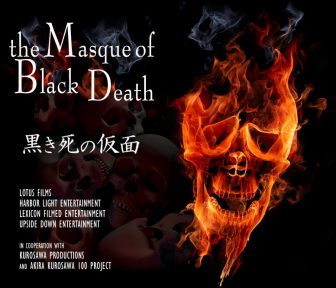 By AKIRA KUROSAWA (1998)
By AKIRA KUROSAWA (1998)
Among the world’s most intriguing unmade film projects this 128 page screenplay, the final script to be written by Japan’s late Akira Kurosawa (together with frequent collaborator Masato Ide, who goes uncredited), looms rather largely. Kurosawa, as I really shouldn’t have to mention, was one of the world’s greatest filmmakers, and this script, adapted from the classic 1842 story “The Masque of the Red Death” by Edgar Allan Poe, is a stunner that perfectly synthesizes and expands upon Poe’s tale, creating a Hell on Earth that I promise will leave no reader unmoved.
The script is so strong, in fact, that I was moved to overlook the innumerable spelling and grammatical errors contained in the English translation by Ian Hideo Levy. Levy’s work, I should add, is the only English version of this script currently in circulation (it can be found at the Akira Kurosawa digital archive, which to add further annoyance is quite difficult to navigate), but I say its irritations are worth enduring.
The setting is Russia in the middle ages, where a motley group of noblemen and aristocrats have holed up in the castle of Duke Nicholas—a castle that “stands arrogantly on top of a hill”—to wait out the black plague that grips the land. It all begins with Jamison, the captain of the Duke’s bodyguards, returning from an expedition to bury the victims of the plague and burn down the villages where they resided. The Duke refuses to admit Jamison and his men, having the guards shoot several of them and welding the castle’s front doors shut with molten iron. From there Jamison and his brigade engage in eleven pages’ worth of “desolate wanderings” that provide a panoramic view of a landscape marked by piles of dead bodies, mass insanity and numerous comparisons to the paintings of Bosch and Brueghel. Jamison’s companions all perish, leaving him to return to the castle alone and beg the outer guards to shoot him. His request is fulfilled, making him one of the tale’s luckier characters.
The remainder of the script takes place within the castle, which as in Poe’s text is a gaudy environ marked by yellow, blue, red, green, purple and black colored rooms that are “joined together in a strangely labyrinthine rectangle.” The resulting shenanigans always seem to involve people passing through these rooms and the banquet hall, where the castle’s panicked inhabitants engage in an increasingly horrific danse macabre.
Also present in the castle is a square containing a garden and a church, and a cellar that houses a jail. A great deal of drama occurs in the latter two locations, with the church serving as the locus of a rebellion against the Duke and the dungeon providing us with an introduction to the Clown, an enigmatic personage (outfitted, appropriately, in a devil’s costume) who comes to play an increasingly prominent role.
Things come to head in the castle when what are believed to be signs of the plague are spotted on the sleeping face of the Duchess, leading to murder, political maneuvering and the introduction of a mysterious masked figure who would appear to be the embodiment of the plague.
Kurosawa presents this dark drama with admirable economy and considerable descriptive power. His seemingly free-form formatting will appear quite eccentric to those used to traditional Hollywood rules of screenwriting, but THE MASK OF THE BLACK DEATH is a page turner nonetheless, and also a provocative exploration of fear and corruption. That it would have made a great film goes without saying (for the record, an animated rendering of the script was announced back in 2008 and a Chinese made adaptation in 2017, but I have yet to see any evidence of either). I’d like to see a better translation, but until that occurs this one will suffice.
